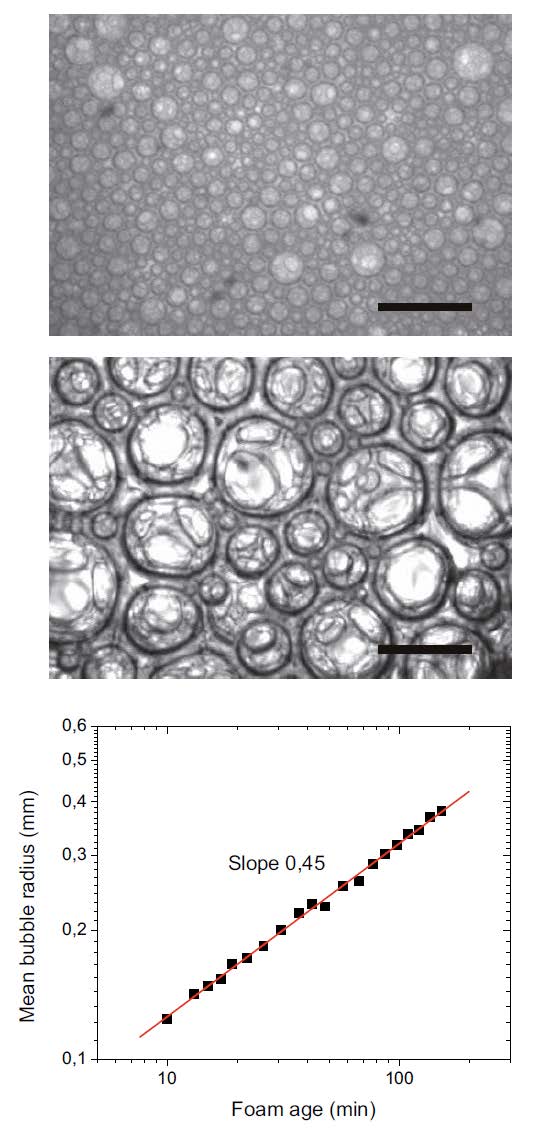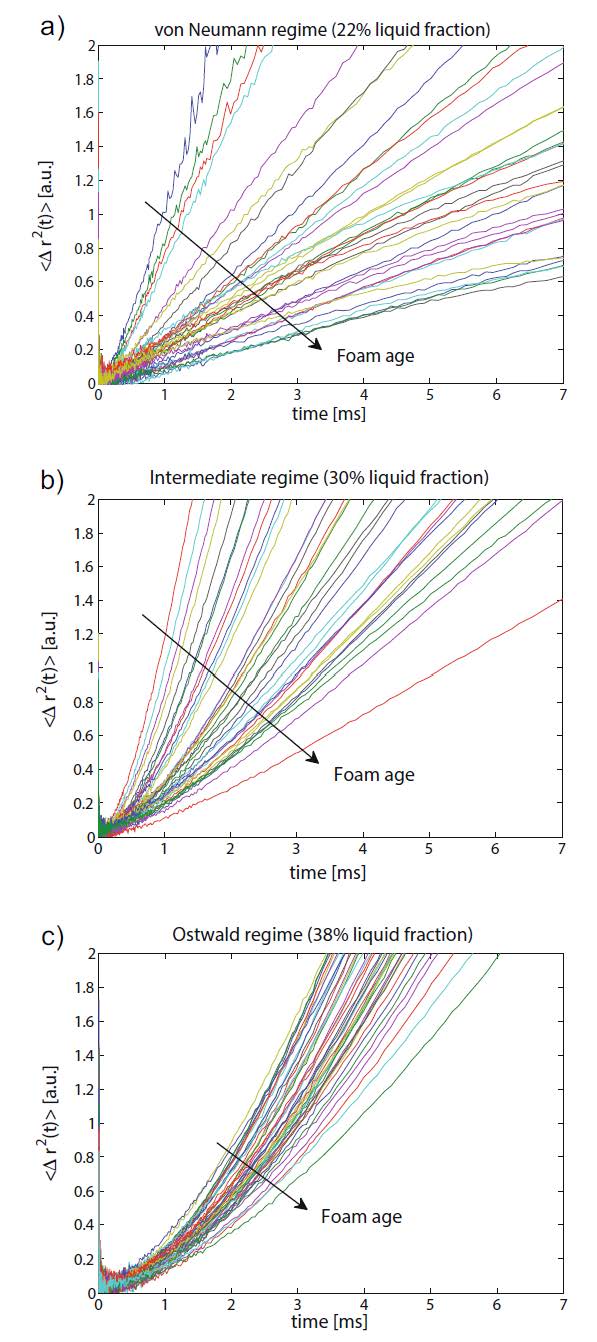Navigation auf uzh.ch
Navigation auf uzh.ch
To study the influence of mechanical stresses on the development of biological tissues, we will also investigate the elastic properties of a simple, growing elastic medium. As a model system we will use use two dimensional foams, which are highly favourable due to their easily visualised structure as well as simple constituents. Thus the basic elastic properties are known and the non-equilibrium properties can be studied directly.
Using direct imaging of the two dimensional foam structure as well as cell recognition algorithms, we will reconstruct a statistical measure of the strain tensor of the foam in two dimensions. Together with flow measurements of the growing foam, this will allow us to determine the elastic constans of the foam in a spatially dependent manner. This is shown in the image below.


Using diamagnetic levitation (see also the section on granular gases), we are able to stably keep foams for very long times at varying liquid fractions. This allows a study of the evolution of bubble sizes with foam age, which has been theoretically studied for a long time. For dry foams, where bubbles are in contact, a von Neumann dynamics with an average growth of bubble sizes proportional to the square root of time is predicted. In contrast for wet foams, where bubbles are separates by liquid, Ostwald ripening is predicted with a time dependence of a one third power-law. Using diffusing wave spectroscopy in the turbid foam, we are able to determine the bubble size as a function of foam age, which is shown for different liquid fractions in the figure below. This shows that the size increases as a power law with exponents changing from 1/2 at low liquid fractions to 1/3 at high liquid fraction.

Summarising results from many different liquid fractions is shown n the figure below, where the transition can be seen to take place at a liquid fraction of 30%, corresponding to dense packing of bubbles.

Using the fluctuations of the transmitted light, it is possible to also study the microscopic dynamics of the bubbles via diffusing wave spectroscopy. Here we find that at low liquid fraction, the bubbles behave diffusively, whereas they behave ballistically at high liquid fractions, see below.
